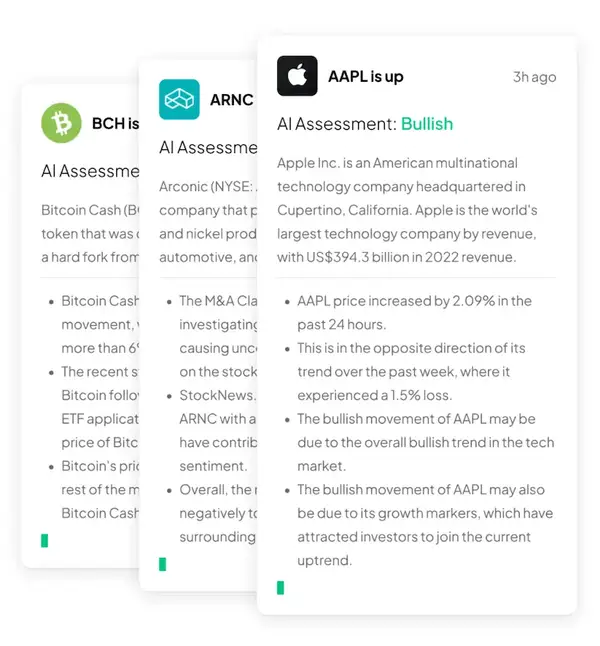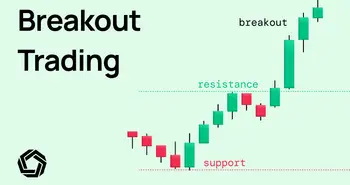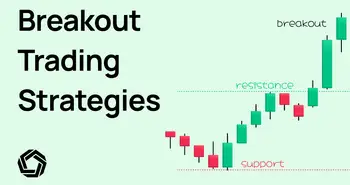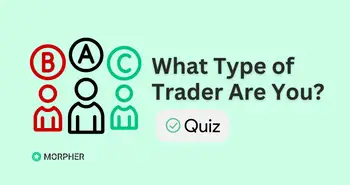Gap and Go Trading for Beginners: A Simple Day Trading Strategy

Ever wondered how some traders consistently make profits in the stock market while others struggle? The secret often lies in the strategies they employ. One such powerful and proven method is Gap and Go Trading. The Gap and Go strategy can turn the opening bell into a goldmine of opportunities, leveraging the momentum and volatility of the market right from the start.
In this article, we will unravel the key principles and techniques of Gap and Go Trading, providing you with actionable insights to kickstart your day trading journey. The Basic Principles of Gap and Go
Principles of Gap and Go Trading
At its core, the Gap and Go Strategy capitalizes on the price movements that occur when there is a gap between the previous day's closing price and the current day's opening price. This gap often happens due to significant news or events that occur outside of regular trading hours, causing a surge in buying or selling pressure.
When a gap occurs, it presents an opportunity for traders to capitalize on the momentum and ride the trend for potential profits. The key principle of the Gap and Go Strategy is to identify and trade these gaps, taking advantage of the initial momentum and volume surge.
Key Terms and Concepts in Gap and Go Trading
Before diving into the strategy itself, it's important to understand some key terms and concepts that are frequently used in Gap and Go trading.
- Gapping up: When the current day's opening price is higher than the previous day's closing price.
- Gapping down: When the current day's opening price is lower than the previous day's closing price.
- Float: The number of shares available for trading in a particular stock.
- Volume: The number of shares traded in a stock during a given time period.
- RSI (Relative Strength Index): A technical indicator used to measure the strength and speed of a stock's price movement.
Understanding these terms will help you navigate the Gap and Go Strategy more effectively and make informed trading decisions.
The Role of Pre-Market Trends in Gap and Go Strategy
Identifying Potential Gaps in Pre-Market
First step of the Gap and Go Trading strategy is identifying potential gaps that may occur in the pre-market session. During this period, traders can gauge market sentiment and anticipate potential price movements based on news or events. Here’s how you can effectively identify these opportunities:
Pre-Market Scanners:
- Tools: Utilize pre-market scanners such as Trade-Ideas Scanner, which provides real-time data on stock prices and volume.
- Indicators: Look for stocks with significant price changes or abnormal volume, as these are strong indicators of potential gaps.
News and Events:
- Earnings Reports: Keep an eye on earnings calendars to anticipate gaps caused by earnings announcements.
- Economic Data: Monitor economic data releases and geopolitical events that could impact market sentiment and lead to price gaps.
Technical Analysis:
- Support and Resistance Levels: Use tools like pivot points and Fibonacci retracements to identify key levels where gaps might occur.
- Candlestick Patterns: Look for patterns like Doji, Hammer, or Shooting Star, which can indicate potential gaps when appearing near support or resistance levels.
It's important to note that not all gaps in the pre-market session lead to profitable opportunities. Traders must exercise caution and conduct thorough analysis before executing trades based on pre-market trends. Understanding the underlying reasons for a gap can help traders make informed decisions.
Analyzing Pre-Market Volume and Price Action
When analyzing pre-market data, paying attention to both volume and price action is essential. Here’s a detailed approach:
- Volume Indicators:
Pre-Market Volume: High volume during the pre-market session often indicates increased interest and potential trading opportunities. Tools like On-Balance Volume (OBV) can help confirm the direction of the gap by showing whether volume is flowing into or out of a stock.
- Price Action:
Candlestick Analysis: Observing the price action through candlestick patterns can provide insights into the stock's direction. For example, a series of bullish candlesticks in pre-market can signal a strong upward gap.
Moving Averages: Using moving averages can help identify dynamic support and resistance levels. Stocks trading above their moving averages in pre-market may continue to gap up.
- Technical Indicators:
Relative Strength Index (RSI): This momentum oscillator can help identify overbought or oversold conditions that may precede a gap. An RSI above 70 indicates overbought conditions, while an RSI below 30 indicates oversold conditions.
Bollinger Bands: If the price gaps outside the Bollinger Bands, it indicates a strong trend and potential trading opportunity.
MACD (Moving Average Convergence Divergence): This indicator can help confirm the direction of the gap by showing the relationship between two moving averages.
Here you can see an example stock chart with the listed technical indicators involved:

Assessing Liquidity and Market Conditions
Once a stock with a potential gap is identified, assess its liquidity and trading volume during the pre-market session:
-
Liquidity:
- Ensure the stock has sufficient liquidity to allow smooth execution of trades and minimize slippage. High liquidity stocks tend to have tighter bid-ask spreads, reducing trading costs.
-
Market Conditions:
- Consider broader market conditions and economic factors when evaluating pre-market trends. Factors such as market volatility, sector performance, and global economic indicators can influence the likelihood of a stock maintaining its pre-market gap or experiencing a reversal during regular trading hours.
By integrating these indicators and analysis methods, traders can better identify and capitalize on potential gaps in the pre-market session, enhancing the effectiveness of their Gap and Go Trading strategy.
Choosing the Right Stocks for Gap and Go Trading
Selecting the right stocks is crucial for successfully implementing the Gap and Go Trading strategy. Here’s a concise guide to help you choose the best candidates:
- Focus on High Volatility Stocks: Look for stocks that show significant price changes within short periods. High volatility creates the price movements needed to capitalize on gaps.
How to Identify:
- Check historical volatility using financial news websites or trading platforms.
- Use the Average True Range (ATR) indicator to measure a stock’s daily price range.
- Analyze Trading Volume: High trading volume ensures liquidity and smoother trade execution, minimizing trading costs.
How to Identify:
- Use pre-market volume scanners like Trade-Ideas or Finviz to find stocks with high trading volumes.
- Monitor volume indicators on your trading platform to assess daily and pre-market volumes.
- Look for Stocks with News Catalysts: Stocks influenced by recent news are more likely to experience significant price gaps.
How to Choose the Best Source for Stock Market News
- Monitor news sources for earnings reports, product launches, regulatory news, or geopolitical events.
-
Timing Your Entry and Exit Points
The timing of your entry and exit points is critical when executing the Gap and Go Strategy. Once the market opens, there is often an initial surge of buying or selling pressure, creating a momentum-driven trend.
Setting clear entry and exit criteria based on predetermined risk-reward ratios is essential for managing trades effectively. Establishing stop-loss orders to limit potential losses and implementing profit targets to secure gains are integral parts of a disciplined trading approach.
Risk Management in Gap and Go Trading
Gap and Go trading is a popular strategy among day traders, known for its potential to capitalize on early morning market volatility. However, with great potential rewards come great risks, making risk management a critical component of this strategy. Traders employing the Gap and Go Strategy must be diligent in setting stop-loss orders to protect their investments and prevent significant losses.
One effective approach to setting stop losses in Gap and Go trading is to identify key support levels or significant moving averages on the price chart. Placing stop-loss orders just below these levels can help traders minimize downside risk and exit losing trades swiftly. By incorporating this practice into their strategy, traders can better safeguard their capital and maintain a disciplined approach to risk management.
Setting Stop Losses in Gap and Go Strategy
It is common to set stop loss levels just below key support levels or significant moving averages to minimize downside risk.
Example: Suppose a stock opens at $50, up from the previous day's close of $45 due to positive earnings. You enter a trade at $50. To manage risk, set a stop loss at $48, just below a key support level. If the stock drops to $48, your stop loss triggers, limiting your loss to $2 per share.
The Importance of Risk-Reward Ratio in Trading
When using the Gap and Go Strategy, consider the risk-reward ratio for each trade. A risk-reward ratio of 1:2 or higher means your potential profit should be at least twice your potential loss. This helps increase overall profitability, even if some trades are unsuccessful.
Example: You spot a stock that has gapped up from $30 to $33. You believe it can reach $39. Entering the trade at $33, you set a stop loss at $31 and a target price of $39. The risk is $2 per share ($33 – $31), and the potential reward is $6 per share ($39 – $33). This gives a risk-reward ratio of 1:3, which is favourable.
Even with a lower win rate, a good risk-reward ratio can lead to profitability. For instance, if you win 4 out of 10 trades with a 1:3 risk-reward ratio, your net profit can still be positive despite losing 6 trades.
Conclusion
Gap and Go Trading is a powerful strategy that leverages market momentum and volatility to capitalize on price gaps at the market open. By focusing on high volatility stocks with significant pre-market volume and news catalysts, traders can identify profitable opportunities. Effective risk management, including setting stop-loss orders and maintaining a favorable risk-reward ratio, is crucial for success.
FAQ
Q: How do I identify potential gaps in the pre-market session?
A: Utilize pre-market scanners and tools that provide real-time data on stock prices and volume. Look for stocks with significant price changes or abnormal volume, indicating a potential gap.
Q: When is the best time to enter trades using the Gap and Go Strategy?
A: The first 15-30 minutes of the market open is typically the best time to enter trades using the Gap and Go Strategy. Monitor the stock's price action, volume, and technical indicators to confirm the strength of the trend.
Q: How do I manage risk when using the Gap and Go Strategy?
A: Set appropriate stop-loss orders just below key support levels or significant moving averages to limit potential losses. Maintain a favorable risk-reward ratio of 1:2 or higher to ensure that your potential profit outweighs your potential loss.
Q: Are technical indicators necessary for implementing the Gap and Go Strategy?
A: While not necessary, incorporating technical indicators can provide additional confirmation and enhance decision-making. Moving averages, MACD, and Bollinger Bands are examples of indicators that can be used to validate potential gaps and identify entry and exit points.
Q: How can I take advantage of pullbacks in Gap and Go trading?
A: Identify key support levels or utilize trendline breakouts to capitalize on pullback opportunities. Learning to master the art of pullbacks can significantly enhance your trading results using the Gap and Go Strategy.
Ready to take your Gap and Go Strategy to the next level? Experience the future of trading with Morpher, the revolutionary platform that's redefining the investing landscape. With zero fees, infinite liquidity, and the ability to trade across a multitude of asset classes, Morpher is the perfect partner for your trading journey. Whether you're looking to invest fractionally or take advantage of 10x leverage, Morpher provides the tools you need for a unique and powerful trading experience. Sign up now to unlock the full potential of your trading strategies and receive your free sign-up bonus. Embrace the innovation of blockchain technology and join the Morpher community today. Sign Up and Get Your Free Sign Up Bonus.

Disclaimer: All investments involve risk, and the past performance of a security, industry, sector, market, financial product, trading strategy, or individual’s trading does not guarantee future results or returns. Investors are fully responsible for any investment decisions they make. Such decisions should be based solely on an evaluation of their financial circumstances, investment objectives, risk tolerance, and liquidity needs. This post does not constitute investment advice.

Painless trading for everyone
Hundreds of markets all in one place - Apple, Bitcoin, Gold, Watches, NFTs, Sneakers and so much more.

Painless trading for everyone
Hundreds of markets all in one place - Apple, Bitcoin, Gold, Watches, NFTs, Sneakers and so much more.










